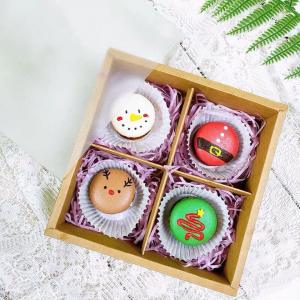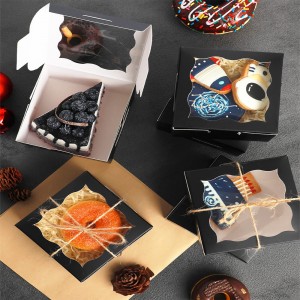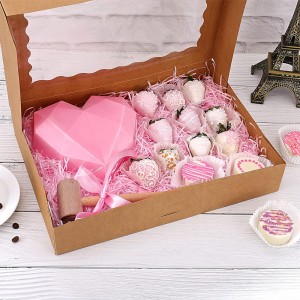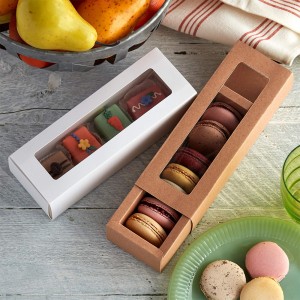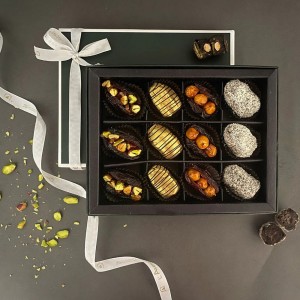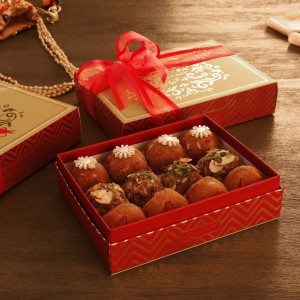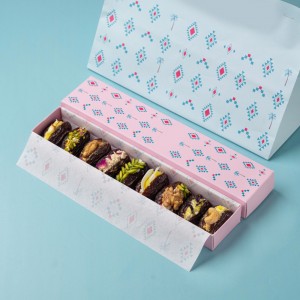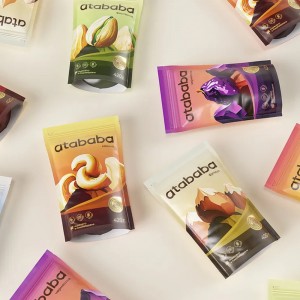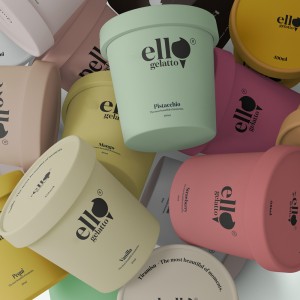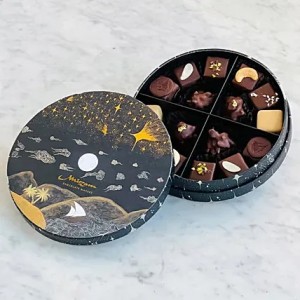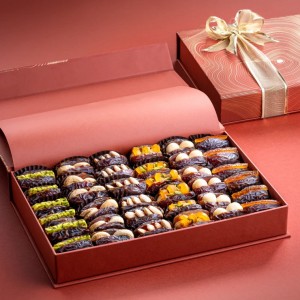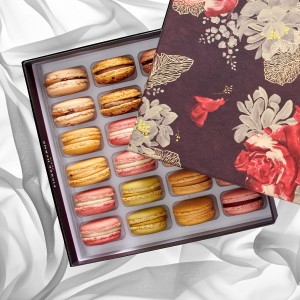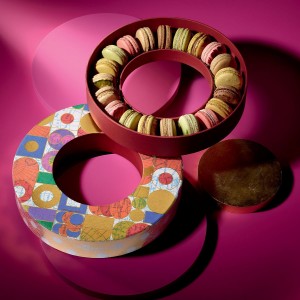Packaging is the general term for materials and containers used in packaging, and packaging is the general term for products after packaging. In modern packaging production lines, whether fully automatic or semi-automatic, they are composed of some complex and sophisticated packaging equipment. In order for these equipment to fully function, it is necessary to provide packaging products that meet the technical specifications and ensure stable quantity. Otherwise, the packaging process will be stopped or the quality of the world’s finest chocolate old packaging products will be reduced. Therefore, packaging material suppliers and customer equipment manufacturers must conduct quality management, testing and control of their products. As for the quality of packaging products, in addition to focusing on their appearance and shape, their use functions should also be emphasized. To this end, technical specifications and inspection steps and methods are also stipulated for packaged products. When the packaging department receives a batch of materials or containers, it needs to be inspected to decide whether to accept it. After completing the packaging of a batch of products, the packaging also needs to be inspected to determine whether it is qualified. There are two inspection methods for packaging products and packages: the first is full inspection, which selects unqualified products.
Although full inspection can provide more quality information, it can only be done when the quantity is small. Quantity In large cases, the cost is high, the time is long, and leaks are inevitable. As for some destructive inspections, it is impossible to do every piece. The second is sampling inspection, which means taking samples from the entire batch of products, and the quality of the samples can represent the overall quality. Samples must be selected as randomly as possible so that each product has an equal probability of being selected. In order to make the sampling results have sufficient credibility, the number of samples can be appropriately increased. However, an increase in samples will increase the cost of inspection, so technical and economic considerations should be taken into account. Consider both aspects comprehensively. In addition, sampling is only a contingency when full inspection cannot be used. During sampling, qualified batches may be rejected and unqualified batches may be accepted. Therefore, it has to bear the risk caused by errors in inference.
World’s finest chocolate old Packaging statistical sampling inspection standard my country’s sampling inspection standard is CB/T2828, of which CB/T2828.1-2003 counts the content of sampling inspection.
include:
(1) Specify product quality standards, that is, specific requirements for product quality, which are formulated by packaging product providers together with users.
Establish technical specifications, including appearance, such as type of material, container size and structure. Internal components, such as whether the packaging can achieve its intended functions of protecting the product, conveying information, and facilitating use.
(2) Determine unqualified and unqualified products. Non-conformity and its categories refer to the failure to meet the requirements of the specification. They are usually classified according to the severity of the non-conformity:①Class A is considered the most concerning type of non-conformity . During use, the performance of the contents is fundamentally affected, such as the bonded or stapled seams of corrugated boxes falling off, printing errors, etc.
(Category 2B considers the category with a slightly lower level of concern than Category A to be unqualified. They cause the performance of the object to be affected to a certain extent during use, such as the bonding of corrugated boxes or the falling of stapled seams. Category 3C considers the level of concern to be lower than that of A and B. The performance of their packaging contents will not be affected during use, such as the outer surface of the corrugated box being printed in different shades or stains.
Non-conforming products and their categories with one or more non-conforming products become non-conforming products. The categories of unqualified products are as follows:
Category A unqualified products refer to products that include one or more Category A unqualified products, and may include Category B and/or Category C unqualified products.
Category 2B unqualified products refer to products that include one or more Category B unqualified products, and may include Category C unqualified products, but do not include Category A unqualified products.
② When Category C is unqualified, it means that the product includes one or more Category C unqualified products, excluding Category A and Category B unqualified products. (3) Determining the composition and batch size of batches should be determined or approved by the responsible department.(4) Specify inspection level The inspection level stipulates the relationship between batch size and sample size. It has 3 general inspection levels (I, Ⅱ, Ⅲ) and 4 special inspection levels (S-1, S-2, S- 3.S-4). Unless otherwise specified, general inspection level II is generally used.(5) Determine the sample size code based on the batch size and inspection level. The sample size code is shown in Table 8-9.
world’s finest chocolate old Packaging products need to be quality controlled during the production process, and the machinery and equipment must be adjusted according to the information obtained to keep the specified quality characteristic values within the required limits. After receiving the packaging products, users must conduct quality inspections to determine whether they are Comply with manufacturing technical specifications and check for obvious damage during transportation.
Quality inspection work content inspection of world’s finest chocolate old packaging is the basic right of users to receive products. It can be full inspection or sampling inspection. The basic contents of the inspection work are:
①Formulate technical specifications for world’s finest chocolate old packaging products. ② Develop evaluation criteria. ③ Use credible inspection tools and inspection methods. ④Record inspection data. ⑤ Put forward suggestions for processing the inspection results. ⑥ Submit inspection data and suggestions to the quality management department.
The specific implementation of quality inspection for world’s finest chocolate old packaging.
The specific quality inspection of various packaging products is different. Here we take the quality inspection of glass bottles, cans, folding cartons, etc. as an example. Other products can be used as reference.
1. Glass bottles and jars
(1) Technical specifications for glass bottles and jars ① Shape. The basic shape of glass bottles and jars mainly depends on the type and quantity of items they contain. Once the bottle shape is determined, a working drawing should be drawn to show the container’s appearance. Usually represented by three views and partial enlarged views, with additional three-dimensional views. ②Size. Important dimensions of glass bottles and jars should be noted on the working drawing and tolerances given, and other items such as capacity or capacity should also be included. Dimensions and tolerances must be negotiated with the manufacturer because the manufacturer’s bottle-making machines have fixed heights and diameters, which often limit the shape and size of bottles and cans. Commonly used bottle making machines roughly limit the height of bottles and cans to 25,300mm. The diameter of bottles and cans is related to the number of bottles and cans produced on one machine section, and its diameter is between 12 and 150 mm.
③Tolerance. Glass bottles are affected by some factors during the molding process, causing some differences in shape and size. Therefore, an acceptable range of variation or tolerance must be given to the size of the bottle. Standard tolerances apply to volume (mL), mass (kg), height (mm) and diameter (mm). The capacity tolerance of small bottles and cans is 15%, and that of large bottles is less than 1%. The capacity tolerance of various bottles and cans is between these two limits. The mass tolerance is roughly 5% of the specified bottle mass, and the height variation range is 0.5% to 0.8% of the total height. The diameter tolerance for vials with a minimum diameter of about 25mm is 8%, and the tolerance for bottles with a maximum diameter of 200mm is 1.5%. The tolerance for other bottles and cans is between these two limits.
It has the most profound research and the most widely used history among world’s finest chocolate old packaging.
The structural design of all Erping’s packaging products has been greatly improved through CAD/M technology. The structural design of packaging products such as paper plates, cartons (board boxes, cartons), turnover boxes, wooden boxes, etc. The software has become very popular in the international market. The most popular wrapping paper conference CACM systems are EEKHUSE, ERPA, MARRACH, SERVO, OVATION, and KONGSBERG. This software is mostly used for human-computer dialogue operations. You can use the keyboard and mouse to design whatever you want on the screen. Paper plate assembly structure diagram. And can easily call the box graphics library. Select a satisfactory polymorphic structure, input the body dimensions (length, width, height) and height to instantly display or print the box structure diagram, and output die-cutting layout diagrams, world’s finest chocolate old packaging printing wheel diagrams and back mold (bottom mold) processing options.
In addition to changing the shape of the carton from the standard box type, you can also design special shapes at will, and transmit the design graphics and data to the plate cutting laser cutting equipment, backing engraving system and die-cutting knife processing equipment, thus ensuring that the die-cutting and backing are consistent. Lining processing accuracy. Improved carton accuracy. After the structure and decoration design of the paper meeting, it must be uniformed. Printing, glazing, lamination, hot stamping, die-cutting, folding, knotting and other processing techniques can be used to produce the cartons required by users. In order to verify the rationality of the carton structure design, in formal mass production, many use Functional carton sample CAM equipment is used to trial-produce 5-10 carton samples, and then modify or redesign after soliciting opinions from users and consumers. To avoid unreasonable carton structural design and manufacturing after mass production, you can also check whether the design meets user requirements. In addition, the die-cutting CAM system can use a focused high-power laser beam to cut the plywood, the substrate of the die-cutting plate, and the computer controls the relative movement of the laser beam and the plywood to cut the pattern designed by the CD on the plywood. Sew as insert mold.
World’s finest chocolate old packaging industry has formed a modern CAD / CAM / CAE system.
Through the CAD system, human-computer interaction is realized to complete the design and modification of the bottle shape and mold, and finally obtain the bottle shape and bottle content that meet the requirements. In addition, the shape of the bottle and the shape of the mold parts can be clearly and accurately drawn through a plotter. Engineering drawings are then transmitted through the network to the CNC machine tool for computer-aided manufacturing (CAM) of the exact geometry of the container and mold component dimensions. In addition, computer-aided engineering can also be used to design a simulation program for the glass molding process to help mold designers obtain better finite element analysis of the parison entity, predict the stress state of the bottle shape, and check whether the sub-stress meets the design requirements. , so that you can modify it again. In this way, the design calculation of the bottle is more accurate, the structural analysis is more reasonable, and the mold performance is superior. Moreover, due to the rapidity of computers, the bottle design cycle has been greatly shortened, design costs have been reduced, and complex workloads such as manual calculations and manual drawings that previously required months can be completed in a very short time.
It speeds up product updates and effectively improves the competitiveness of products in the market. The basic structure of a glass bottle consists of the bottle mouth, bottle body, bottle bottom, and the shoulder and neck parts that connect the bottle mouth and bottle body. These components of different specifications, sizes, and shapes can be combined into a variety of different shapes and structures. glass bottle. Glass bottles should be sealed with appropriate methods after being filled with packaged goods to prevent the world’s finest chocolate old packaged goods from being leaked or external impurities mixed in, causing damage to the packaged goods. Depending on the sealing requirements, the bottle mouth structure is also different. Generally, it can be divided into crown bottle mouth, threaded bottle mouth, plug seal bottle mouth, vacuum seal bottle mouth, etc. Based on the analysis of the structural characteristics of each part of the bottle, the glass bottle structure CAD stores different bottle shapes (including the bottle bottom, bottle mouth and other partial structures) in the system. The designer only needs to input a small amount of design data into the system. , that is, the relevant structural design drawings can be obtained using the design knowledge and design drawings in the system.
Post time: Jun-11-2024




